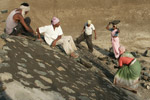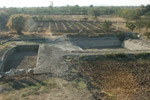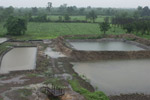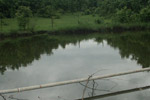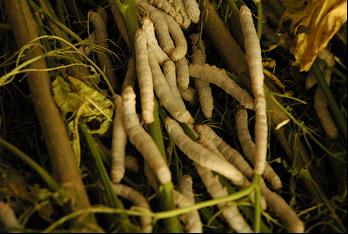
In 2002 we started a silk production project that now serves as an example for small farmers looking for an alternative and more reliable way of making a living in this part of India, where the monsoon is becoming less and less predictable.
India is the second largest silk producer in the world after China. As the market for silk in India is still growing every year there is a chance for many small farmers to diversify their income and move away from their present reliance a cotton crop with falling world prices.
The principle of silk farming is quite easy:
In an airy and cross-ventilated room, the silkworm eggs are put on mulberry leaves that have been laid out on shelves.
After hatching from the egg, the larvae go through four moults as they grow. During each moult, the old skin is cast away and a larger one is produced. Once the silkworm starts to cover itself with a yellowish thread (four weeks after hatching) it takes only another four days for the silkworm to finish the process. Then the cocoon is ready for sale.
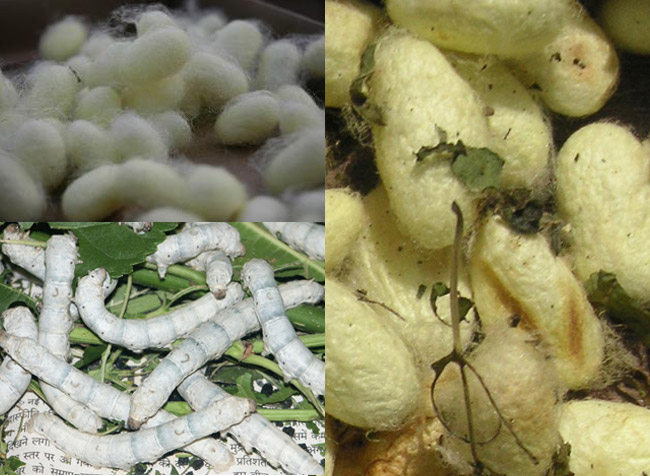
The Maharashtra State buys the cocoons, the price being dependant on the quality of the cocoons at rates between Rs. 90-125 per kilogramme, and extracts the actual silk thread in expensive machines. For example, in the Sangam’s silk farm every month 24,000 silkworm cocoons can be bred in a room of about 18 square meters. Silkworms only feed on mulberry leaves and for 24,000 worms only half an acre of quality land is needed to grow enough mulberry leaves to feed them. The yield every month is about 40 kilogrammes of cocoons, which approximately earns Rs. 4,000 when sold to the government.
Our aim is to upgrade the present facilities in cooperation with the Sericulture Department and to build a training centre for silk farming offering demonstrations and training for farmers from this area.
|

